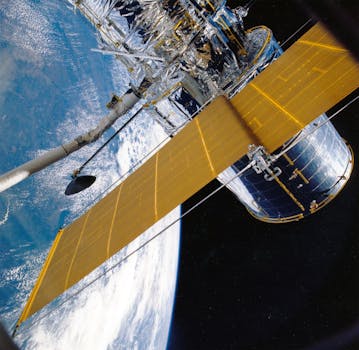The Future of Satellites: Revolutionizing Global Connectivity
The future of satellites holds immense promise for revolutionizing global connectivity, enabling faster and more reliable communication, navigation, and Earth observation. With advancements in space technology, satellites are becoming increasingly sophisticated, leading to new opportunities for commercial, scientific, and military applications.

The Future of Satellites: Revolutionizing Global Connectivity
The future of satellites holds immense promise for revolutionizing global connectivity, enabling faster and more reliable communication, navigation, and Earth observation. With advancements in space technology, satellites are becoming increasingly sophisticated, leading to new opportunities for commercial, scientific, and military applications. The future of satellites is closely tied to the development of new technologies, such as 5G networks, artificial intelligence, and Internet of Things (IoT), which will rely heavily on satellite-based infrastructure.
Advances in Satellite Technology
Recent advances in satellite technology have led to the development of smaller, more efficient, and cost-effective satellites. CubeSats, for example, are miniature satellites that weigh less than 1.33 kg and measure only 10 cm on each side. These small satellites are capable of performing a variety of tasks, including Earth observation, communication, and navigation. The use of 3D printing and advanced materials has also enabled the creation of more complex and sophisticated satellite designs.
The development of reusable launch vehicles has significantly reduced the cost of accessing space, making it more feasible for companies and organizations to launch their own satellites. This has led to an increase in the number of satellites in orbit, with many more planned for launch in the coming years. The growing demand for satellite-based services has also driven innovation in areas such as satellite propulsion and power generation.
Applications of Satellites
Satellites have a wide range of applications, from communication and navigation to Earth observation and space exploration. Satellites play a critical role in providing global connectivity, enabling people to stay connected and access information from anywhere in the world. They also provide critical services such as weather forecasting, disaster response, and climate monitoring.
The use of satellites in space exploration has led to numerous breakthroughs in our understanding of the universe. Satellites have enabled us to study the surface of Mars, explore the outer reaches of the solar system, and search for signs of life beyond Earth. The upcoming James Webb Space Telescope will use a satellite-based platform to study the formation of the first stars and galaxies in the universe.
Challenges and Opportunities
Despite the many advances in satellite technology, there are still significant challenges to overcome. The growing number of satellites in orbit has raised concerns about space debris and the potential for collisions. The use of satellites also raises important questions about regulation and governance, particularly in areas such as privacy and security.
However, the opportunities presented by satellites far outweigh the challenges. The development of new satellite-based technologies has the potential to transform industries such as transportation, agriculture, and finance. Satellites will also play a critical role in addressing some of the world’s most pressing challenges, including climate change, poverty, and inequality.
Conclusion
In conclusion, the future of satellites holds immense promise for revolutionizing global connectivity, enabling faster and more reliable communication, navigation, and Earth observation. With advancements in space technology, satellites are becoming increasingly sophisticated, leading to new opportunities for commercial, scientific, and military applications. As we look to the future, it is clear that satellites will play a critical role in shaping the course of human history, and it is up to us to ensure that we use this technology responsibly and for the benefit of all humanity.




